For those of us that enjoy decorating, one of the most common questions that is asked is, “What is your decorating style?” This can be a difficult question to answer, especially if you aren’t sure of the definition of the various decorating styles! Now, I truly believe that decorating styles are individual and can be mixed and matched {or even made up for that matter!}; however, I still think it’s important to know the basic decorating styles in order to use them as a basis, or starting point, for your own, individualized style. So let’s take a look at some of the most common styles.

Traditional
A traditional style of decorating is defined by classic, timeless pieces. The furnishing will be intricate but not fussy, so think turned legs, carved details, and lots of millwork. The wood tones are typically darker and the metal finishes lean toward warmer, such as gold, brass, and copper. Furniture and decor choices tend to lean toward things that emphasize curves, so you won’t see a lot of clean, straight lines in a traditional room.
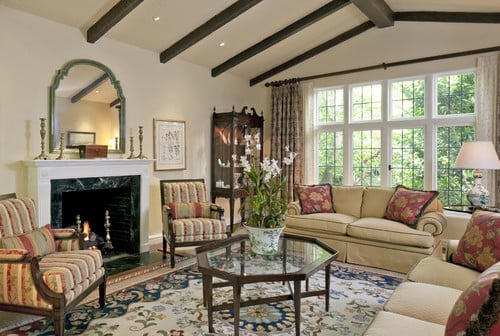
Another tell for traditional stye? Predictability and symmetry! Traditional style of decorating uses a lot of formal, conversational furniture groupings and items placed in a very symmetrical manner, whether it’s two wingback chairs flanking a sofa or a pair of candle holders evenly placed on a mantle.
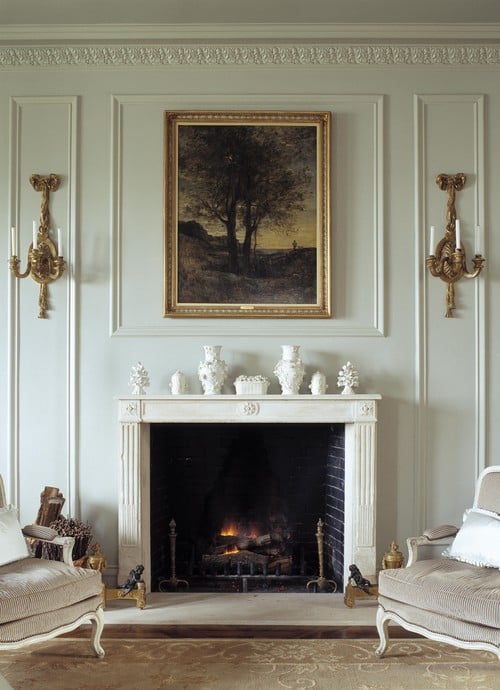
While neutrals are a favorite in traditional style of decorating, so are rich colors and patterns, but they tend to be dramatics, as opposed to bold.
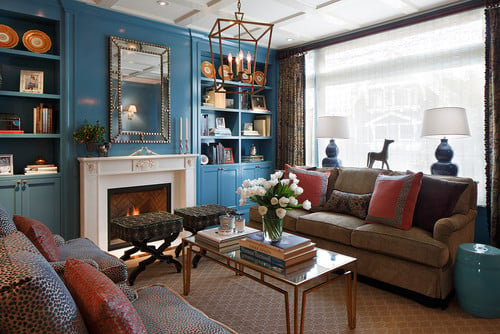
Contemporary
Technically, a contemporary design style reflects what is popular “now”, meaning that it represents whatever styles, colors, etc. are currently trending. But in general, a contemporary style is one where less is more. Spaces tend to be more open and cleaner, where accessories aren’t collected, but intentional. Straight lines are king in contemporary design, but they are often broken up just a bit with round, geometric shapes just for a bit of contrast.

In terms of colors, think sleek and sophisticated. Neutrals and monochromatic colors schemes dominate, as do cooler, shiny finishes like chrome, steel, and glass.

While Contemporary and Modern styles are often used interchangeably because they are similar, they are actually a bit different. Contemporary design takes it cue from Modern, but then doesn’t hesitate to break the rules to reflect whatever is current, whereas Modern is a bit more strict with its style based on historical, iconic design.
Transitional
Think of Transitional design as a happy marriage between Traditional and Contemporary. It’s basically the familiarity and comfort of Traditional, but an updated version that is a bit more streamlined and simple and…well, contemporary! Transitional furniture pieces are often a mix of curving and linear so that they maintain a sense of comfort but have a sleeker overall look to them. The same sofa could live on both a Traditional and Transitional room, but in the Traditional, it will likely have a skirt, whereas in the Transitional, it won’t and will instead feature clean lines at the base!
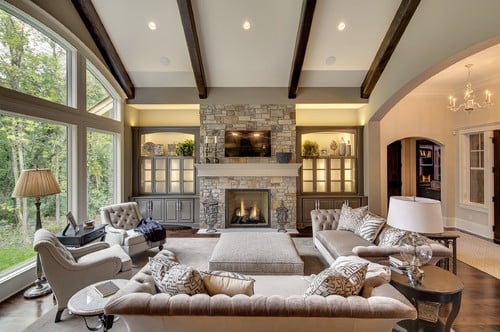
In Transitional design, forget the heavier fabrics and rich colors of Traditional and opt for a quieter, simpler look. While the prints and patterns might be the same between the Traditional and Transitional, a Transitional room will eschew lots of colors and opt for tone-on-tone. You might also find a classic print that has been revamped for a more current feel.

Colors tend to stay within the neutral palette and patterns are present, but minimal. Transitional spaces are kept from feeling boring with their use of texture, though. Fabrics, accents and other decor are elegant and “warm” but simple in design.
Up next, Decorating Styles Defined: Part 2
- Eclectic
- Hollywood Regency
- French Country
Click to read!
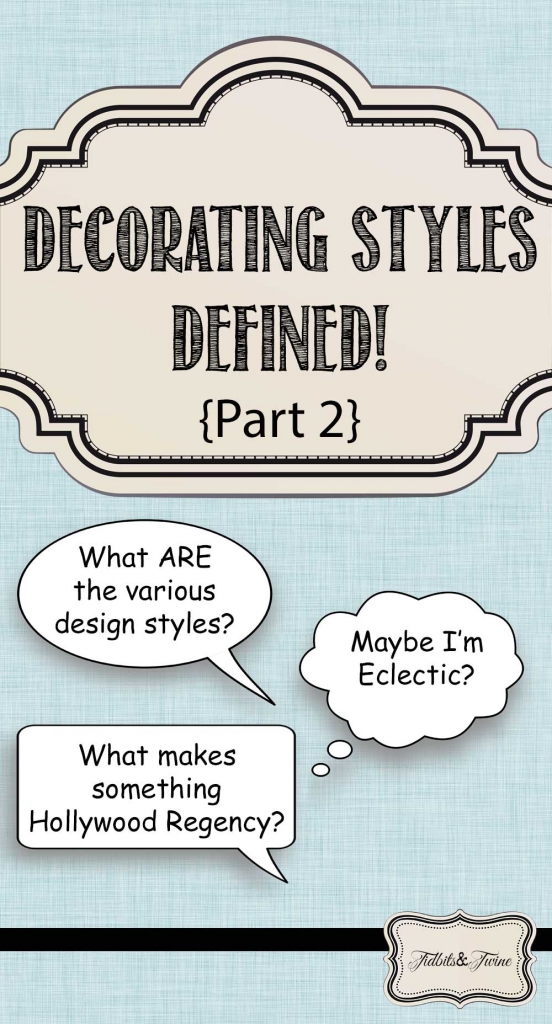

Join the Community
Let’s keep in touch! Get exclusive artwork plus the latest news delivered directly to your Inbox!

I’m an interior design stylist.
I found your site by pinterest and now it’s easyier to explain to my client the difference between what they ask and what theirs style are in reality.
I am so excited about finding you! It was quite by accident but I love your site. Subscribed to your list! I am traditional with a twist of transitional and pinch of French country.
Your descriptions of the various styles are the most understandable of any I’ve seen! I definitely understand my own style a lot better now. Thanks!
Hi Katherine – I’m so glad you found this post helpful! So….what IS your style??? :) Kim
I’ve always been a traditional girl, but I’m definitely moving towards Transitional. Thanks for the overview.